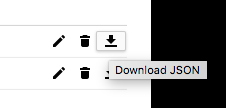Autentique apps instaladas com contas de utilizador
Este guia explica como fazer a autenticação através de contas de utilizador para aceder à API BigQuery quando a sua app está instalada nos computadores dos utilizadores.
Para garantir que a app acede apenas a tabelas do BigQuery que estão disponíveis para o utilizador final, faça a autenticação através de uma credencial de utilizador. Uma credencial de utilizador pode executar consultas apenas no projeto do utilizador final, e não no projeto da app. Google Cloud Como resultado, a faturação das consultas é feita ao utilizador e não à app.
Antes de começar
- Crie um Google Cloud projeto que represente a sua app instalada.
- Instale as bibliotecas cliente do BigQuery.
-
Instale bibliotecas de autenticação.
Java
Se estiver a usar o Maven, inclua as seguintes dependências no ficheiro POM.
Python
Instale a integração oauthlib para a autenticação Google.
pip install --upgrade google-auth-oauthlib
Node.js
Instale a integração oauthlib para a autenticação Google.
npm install google-auth-library
npm install readline-promise
Configure as credenciais do cliente
Use o botão seguinte para selecionar um projeto e criar as credenciais necessárias.Crie credenciais manualmente
- Aceda à página Credenciais na Google Cloud consola.
- Preencha os campos obrigatórios no ecrã de consentimento OAuth.
-
Na página Credenciais, clique no botão Criar credenciais.
Escolha ID de cliente OAuth.
- Selecione Computador como tipo de app e, de seguida, clique em Criar.
-
Transfira as credenciais clicando no botão Transferir JSON.

Guarde o ficheiro de credenciais em
client_secrets.json. Este ficheiro tem de ser distribuído com a sua app.
Autentique e chame a API
-
Use as credenciais do cliente para executar o fluxo do
OAuth 2.0.
Java
Python
Node.js
-
Use as credenciais autenticadas para estabelecer ligação à API BigQuery.
Java
Python
Node.js
Quando executa o código de exemplo, é iniciado um navegador que pede acesso ao projeto associado aos segredos do cliente. Pode usar as credenciais resultantes para aceder aos recursos do BigQuery do utilizador porque o exemplo pediu o âmbito do BigQuery.
O que se segue?
- Saiba mais sobre outras formas de autenticar a sua app para aceder à API BigQuery.
- Saiba mais sobre a autenticação com credenciais do utilizador final para todas as APIs Cloud.

